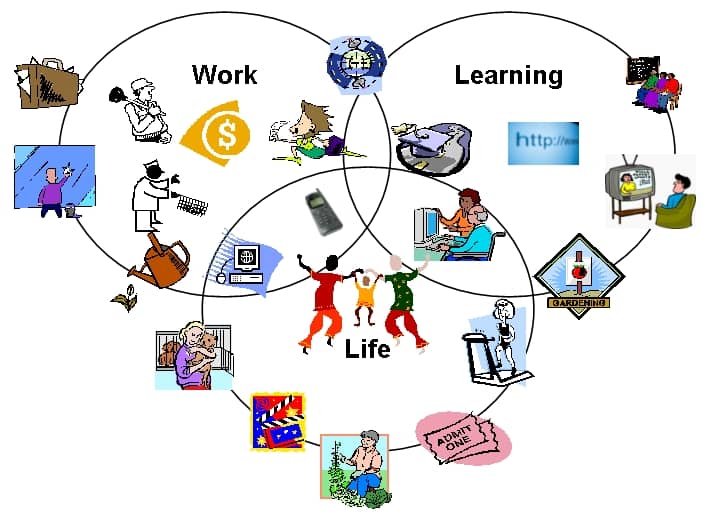The Government of India proposed a new education policy on 29th July 2020. The new education policy was confirmed by the Union Cabinet and made several changes in school and higher education. The announcement on the NEP 2020 was made last Wednesday by Prakash Javadekar (Minister of Information and Broadcasting) and Ramesh Pokhriyal Nishank (Human Resource Development Minister) with an aim to make ‘India a global knowledge superpower.’
New National Education Policy 2020: Higher Education Key Highlight
- Higher Education Commission of India (HECI) will be established as the regulatory body of the entire higher education (except medical and legal education). UGC, AICTE will be replaced by HECI.
- Higher Education Commission of India will be divided into four categories- National Higher Education Regulatory Council (HERC) for regulation, National Accreditation Council (NAC) for accreditation purpose, General Education Council for standard-setting (GEC), and Higher Education Grants Council (HEGC) for funding purpose.
- Under NEP 2020, universities will serve as a multidisciplinary institution. It will provide undergraduate and graduate programs, with high-quality teaching, research, and community engagement. Even IITs will move towards a multidisciplinary curriculum with more arts and humanities.
- The undergraduate degree will be of either 3 or 4 years and will have multiple exit options. A certificate will be provided if one completes 1 year in a field, including vocational and professional areas. A diploma will be provided if one completes 2 years of study in a field or discipline. Bachelor’s degree will be provided after a 3-year program. However, the 4-year multidisciplinary Bachelor’s program will be preferred.
- Students who will be pursuing the 4-year multidisciplinary Bachelor’s program will have an option to get a degree with research if they complete the research process in their area of study.
- Renowned Indian universities will be motivated to establish campuses in other countries. New National Education Policy intends to promote India as a global study destination that will provide premium education at affordable costs.
- A National Research Foundation (NRF) will be set up. The goal of NRF will be to enable a culture of research across all academic disciplines. It will be governed independently by a rotating board of governors.
- The National Testing Agency (NTA) will conduct a common University entrance exam twice a year.
- MPhil will be discontinued so that students with a masters’ degree can get a Ph.D. degree directly.
- Under NEP 2020 tech-based options for adult learning like apps, online courses/modules, satellite-based TV channels, online books, etc. will be developed.
- A National Curriculum Framework for Teacher Education will be formulated by the year 2021. The minimum degree qualification for teaching (B. Ed) will be for 4 years by 2030.
- New Education Policy 2020 has also proposed to establish an Indian Institute of Translation and Interpretation to strengthen Sanskrit and other Indian languages of the students.
New National Education Policy 2020: School Education Key Highlights
- Under NEP 2020, education will be mandatory for children between the age of 3 and 18 years.
- Previous 10+2 structure will be replaced by 5+3+3+4 structure
- a) Foundational Stage (5): The foundational stage has been recommended for 3 to 8 years. It will include 3 years of playschool and kindergarten classes for children of ages 3 to 6 years. The grades 1 and 2 for students whose age ranges between 6 years and 8 years will also be included.
- b) Preparatory Stage (3): This stage has been suggested for classes 3 to 5 and covers students whose age ranges between 8 and 11.
- c) Middle Stage (3): This stage has been suggested for classes 6 to 8.
- d) Secondary Stage (4): This stage has been suggested for classes 9 to 12.
- More emphasis will be put on Early Childhood Care Education (ECCE) for ages 3 to 6.
- A new National Assessment Centre named PARAKH (Performance Assessment, Review, and Analysis of Knowledge for Holistic Development) will be established as a standard-setting body for all recognized school boards.
- Under the New Education Policy, there won’t be any hard separation among Arts, Science, and Commerce. Students can choose subjects of their choice. Coding will start from class 6 and there won’t be any difference between curricular and extra-curricular activities, or between vocational or academic streams.
- Students will be given more flexibility in their choice of subjects – including subjects in physical education, arts and crafts, and vocational skills.
- Vocational education will start in schools from the 6th standard and the students will also get internship opportunities.
- The education ministry will establish a National Mission on Foundational Literacy and Numeracy. By the year 2025, each state will prepare an implementation plan so they all the students in primary schools can achieve foundational literacy and numeracy by class 3.
- The New Education Policy will put more emphasis on a child’s mother tongue as the medium of instruction. The medium of instruction until the 5th standard will be in home language/mother-tongue/regional language.
- The school curriculum will mostly focus on key concepts, ideas, applications, and problem-solving. More emphasis will be given on critical thinking, and discovery-based, discussion-based, and experiential learning.
- The three languages that each child will learn will be the choices of States, regions, and students, as long as at least two of the three languages are native to India.
- The NEP 2020 will give more importance to the nutrition and health (including mental health) of the children. Students will be given healthy meals, will have regular health check-ups, and will also be issued health cards to monitor their health.
- NIOS and State Open Schools will offer A, B, and C levels that are equal to 3rd, 5th, and 8th standards of the formal school system; secondary education programs that are similar to classes 10 and 12; vocational education courses/programs; and adult literacy and life-enrichment programs.
- NEP 2020 will give opportunities to gifted/special children to take part in the regular schooling process from the foundational stage to higher education. These children will also get adequate support from educators who have received cross-disability training, and there will be technology-based tools tailored for them so that it can suit their requirements.
- Under NEP 2020, all schools will be digitally equipped. Technology will be used comprehensively. Also, e-content in regional languages will be developed.
- Board exam will be conducted twice a year. To reduce the stress of the board exam, the exam will be conducted in two parts- objective and descriptive.
NEP 2020: School complexes will be used for adult education courses after school period is over
National Education Policy 2020 has also emphasized on using school complexes for adult education courses after school period is over. Also, public library spaces for adult education courses will be ICT-equipped when possible and for other community engagement and enrichment activities.
NEP 2020: Focus on vocational studies in schools

National Education Policy 2020 will focus more on vocational studies at the school-level. The government intends to expose at least 50% of the learners to vocational education by 2025. Under this policy, each child has to learn at least one vocational craft among metalwork, gardening, pottery making, carpentry, etc. within classes 6 to 8. Students of class 6th, 7th, and 8th standards will be allowed to intern with local vocational experts like carpenters, gardeners, potters, etc. Vocational courses via online mode will be available as well.
Comparison of old and new education policy
Five major differences between old and new education policy are listed below:
- In the new education policy 2020, multiple entry and exit options in degree courses are available. This option was not available in the old education policy.
- MPhil programs have been discontinued in the new education policy, while the old education policy encouraged the MPhil program.
- A solitary regulatory body for higher education institutions- Higher Education Commission of India (HECI) has been established in New Education Policy 2020. In the old education policy, there were several regulatory bodies like UG and AICTE.
- The New National Education Policy focuses on common entrance exams for universities which were not the case with the old education policy.
- NEP 2020 has changed the existing board exam pattern. In this new policy, the school curriculum will focus more on core concepts ideas, applications, and intends to discourage rote learning.
Benefits of new education policy 2020
Some of the benefits of the New Education Policy are listed below:
- Universalization of early school education and more focus on new life skills like coding will help in creating intelligent future leaders of India.
- Early childhood care and education (ECCE) plays an important role in developing the base for lifelong learning and well-being for each child.
- The introduction of Sanskrit and other regional languages will turn out to be a blessing for the students residing in rural areas.
- Change in the pedagogical structure from a 10+2 structure to a 5+3+3+4 structure will enhance the reputation of skill-based education and will also increase employment opportunities for youth.
- The removal of streams in secondary education will assure that no career opportunity is restricted to students owing to subject specialization.
- The introduction of vocational courses for children is a welcoming step. Vocational courses will provide adequate opportunities for school students to skill themselves.
- 4-year-Bachelor’s program will enable students to become eligible for many top-ranked global programs.
- New Education Policy’s aim to increase the Gross Enrolment Ratio (GER) from 26.3% to 50% will drive positive change in India’s economy.
- A common entrance test for undergraduate admissions will reduce the pressure from students as they won’t have to prepare for multiple exams now.
- Multiple entry and exit options in degree courses will be beneficial for those students who change streams or exit courses due to various reasons.
Disadvantages of NEP 2020
- NEP 2020 focuses mostly on regional and local languages which will in turn reduce the importance of the English language. English offers a great comparative global advantage since most people in the world talk in this language.
- Introducing the English language directly from Class 6 will be difficult for children who do not come from privileged backgrounds like those from rich and upper-caste families.
- NEP 2020 intends to create high-quality bilingual textbooks so that students can grasp concepts in both English as well as in their regional languages. But it does not inform how it will be achieved.
Conclusion
NEP 2020 intends for universalization of education from pre-school level to secondary education level with 100% Gross Enrolment Ratio (GER) in school education by 2030. It also intends to increase GER in higher education to 50% by the year 2025. The policy also intends to achieve 100% youth and adult literacy.

